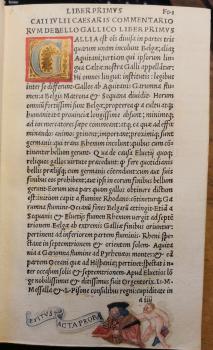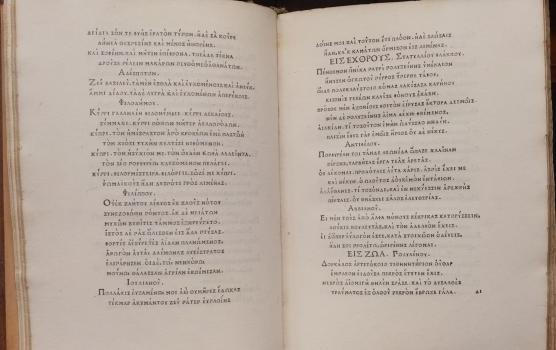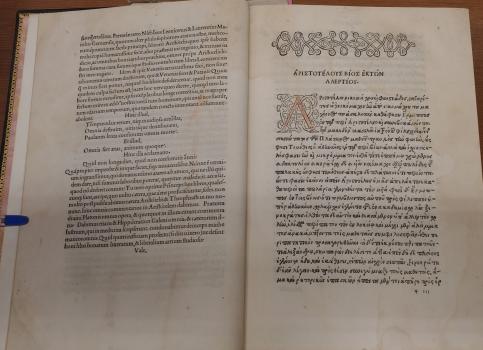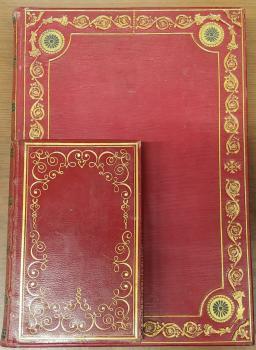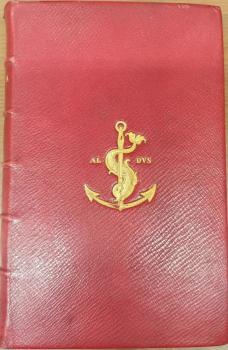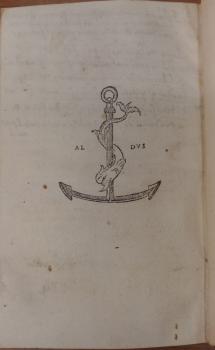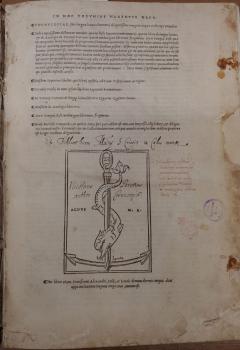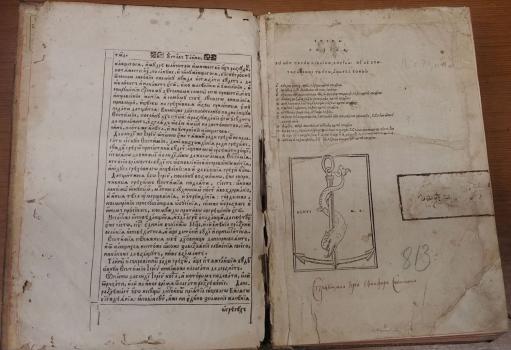Aldine Press: Three Generations of the Publishers
New Academy: the Founding of the Printing Company
The cultural processes that flourished in the Italian lands in the 15th century under the banner of humanism are a favorite topic for discussions between historians and numerous connoisseurs of the arts. However, the image of the brilliant 1400s, would be incomplete without mentioning book printing as one of the major causes of the Italian Renaissance.
The invention of Johannes Gutenberg gave a powerful impetus to the growth of the new industry of printing in the southern regions of Europe in the second half of the 15th century. The printing press reached Italy with Nicholas Jenson. This carver was sent to Mainz, by King Charles VII, to study the craft of printing under Gutenberg himself. Learning trade secrets from the German pioneer printer, Jenson did not go back to France. This was also due to the death of the monarch who patronized him. Instead of returning to his homeland, the printer preferred to move to Italy, where he opened the first print shop in Venice.
Shortly after Jenson established his print shop in the Republic of Saint Mark, the printer's major competitors appeared. In the last third of the 15th century, such famous masters of their craft as Gregorio de Gregoris, Lucantonio Giunta and Andrea Torresani di Azolo were active in Venice. The latter has a close relationship with the main protagonist of our exhibition – Aldus Manutius, an eminent printer who, in 1500 married the daughter of Torresani and formed a printing partnership with his father-in-law.
Andrea Torresani, in turn, was in some way the heir to the aforementioned pioneer printer Nikolas Jenson, since he acquired the fonts of the French master. Torresani highly valued his son-in-law's skill, so from 1508 their joint book production was marked at the end of the text, as printed in the "House of Aldus & Andrea".
Aldus Manutius was born about 1450 in Bassiano, a small town near Rome. While studying in Rome and later in Ferrara, Aldus entered the circles of humanists and made connections with his future patrons. In particular, in 1485, Aldus Manutius became the tutor of Alberto and Lionello, the young princes of Carpi, on the recommendation of the outstanding humanist Giovanni Pico di Mirandola. This important event in the life of the future printer played an important role, since Prince Alberto later funded a printing house, launched in Venice by his beloved tutor.
Interesting that Aldus Manutius took an atypical route to the printing trade. Most often, people with a wide range of skills and experience – former engravers, carvers or jewelers became printers. Whereas Aldus was a talented scholar-translator and, before choosing a printing career, he had no professional skills. This factor shaped the bright individuality of his printing company.
The choice of Venice as a place for a printing press does not cause questions among historians. By the time the Aldus Press was opened, one of the largest Greek communities had formed in the city where many Greeks fled after the Ottoman conquest of Byzantium. Aldus Manutius was assisted in his work by bearers of the centuries-old Greco-Roman ancient culture. Thanks to the participation of his humanist friends and Greek scholars, the Aldine Press became known as NEACADEMIA - "New Academy".
Let us emphasize that the Aldine Press greatly outgrew the confines of a publishing house, and the name "New Academy" suited it perfectly. The group of authors close to the Academy, scholars, philosophers, translators, commentators and proofreaders, met regularly in an informal atmosphere at a common meal. Such symposiums discussed the printing programme of the press. Aldus Manutius, a connoisseur of Byzantine learning, introduced a strict rule: communication had to be only in Greek. If somebody of the guests forgot himself and inserted Italian or Latin words – he paid a fine, and this money went to pay for food and wine.
Such meetings clearly distinguished the Aldus printing company from the others and only enhanced its reputation. Researchers of early printed books often emphasize the striking integrity of the works that Aldus Manutius succeeded to issue. Having completed the fundamental five-volume edition of Aristotle in Greek in 1498, the printer began to publish the classics of his homeland. The printed collections of Petrarch, Dante, Poliziano and Bembo were quickly released into the Italian bookselling market.
Printed book at the turn of the 15th–16th centuries actively captured its niche in everyday life, gradually pushing back expensive manuscripts. This process also had the dark side – the cheapness of a printed book was based on poor conditions for workers. Modern research allows us to reconstruct the economic aspect of book printing at that time.
Typists worked an average of 14 hours a day, typing two pages of a two-column folio daily. For this, they received from 2.5 to 3 ducats per month, while a copyist could receive up to 10 ducats. The unjust conditions caused workers to go on strike. Such strikes disrupted publishers' plans. Similar problems did not bypass the Aldine Press: readers are informed about this by a message written by the printer in one of his publications in 1503.
Saving on the low paid labor of ordinary printers, publishers, however, often used the highest quality materials for books to compete successfully with manuscripts. The most expensive was paper which composition is very different from modern. In those days, it was made from rags. Canvas and other products made from hemp (for example, fishing nets) were especially valued. The position of Venice as a key maritime power obviously benefited numerous printers, since there was no lack of the materials used in the manufacture of paper. Such paper easily survived the centuries and has come down to our days. The paint for letters, made from burnt vine-branches, did not fade either.
As we noted above, Aldus Manutius was, first and foremost, a scholar, not a printer. However, he introduced several important innovations in the printing business. To realize his ideas, Aldus skillfully selected talented implementers. For example, his cooperation with the outstanding type cutter Francesco Griffo yielded outstanding results. The illustrious master proudly called himself «sculptur literarum» – a letterform maker.
By the time he started working with Aldus, Griffo already had a lot of experience in printing business. In 1474 – 1480 he designed typefaces for Piero Maufero in Padua. Then he moved to Venice and worked there with a large number of clients. From 1494 to 1502, Francesco Griffo designed and cut types for the Aldine Press. The Greek and Latin fonts created by the master made the Aldines (the Aldine Press editions) the Renaissance masterpieces of book printing.
Italian printers used Greek fonts even before the New Academy, but Aldus and Griffo perfected a form of Greek type. Previously, only capital (or majuscal) font was used to print Greek letters. Griffo's tight Greek cursive, produced for the Aldine Press, led to a real revolution in printing. You can see it yourself by comparing the fonts of the Greek Anthology, dated 1494, and the four-volume collected works of Aristotle, printed by Aldus in 1497.
Attention to fonts – the distinctive feature of Italian printing. The humanists developed the elegant italic font, called “Humanist Serif” or “Antiqua”, in contrast to the Gothic type, which they considered barbaric. Antiqua mimicked Carolingian handwriting, used to copy the works of ancient authors in France during 8th–9th centuries. Such manuscripts were regarded by humanists as original works that had come down from the depths of centuries, which is why the Renaissance intellectuals wished to adopt these fonts. Taking the Carolingian minuscule as a model, the 15th century humanists actively developed printed serif.
The New Academy also took part in this process. Etna by Pietro Bembo was the first book printed by Aldus in the finest Venetian Serif, designed and cut by Francesco Griffo. This edition is deservedly considered one of early printed masterpieces.
The celebrated cursive fonts, created by Griffo, allowed Aldus Manutius to print his famous editions in octavo format from 1501, which became a kind of hallmark of the New Academy. (For books in the octavo format, each sheet will need to be folded in half three times). These small books, almost pocket-sized, quickly gained unprecedented popularity. The famous bibliologist Antoine-Augustin Renouard wrote about this innovation, "We can imagine the joy these editions have been greeted with, which contain so much content in such a small format and cost so little. How pleased an inquisitive person, a friend of literature, must have been with the emergence of these charming in-octavos, these Virgils, these Horaces, contained in a small book, which from now on he could сarry in his pocket when walking or traveling&helli; 10 – 12 such books cost as much as one of the huge volumes that until then were the only stock of libraries.….».
When the Aldine Press had already gained pan-European fame, the printer was faced with the need to mark his books so that they could be distinguished from сounterfeit. The founder of the New Academy wrote about this acute problem in his letters, "At the present time, as far as I know, they print works by: Virgil, Horace, Juvenal, Perseus, Martial, Lucan, Catullus, Tibullus and Propertius, Terence in Lyon in fonts very similar to ours – all these works are missing the name of the printer, the place and year when they were completed. Besides, there is no special mark on them; while ours feature a dolphin wrapped around an anchor. In addition, the paper of those is the worst, and, I don't know why – have a fetid odor; and the letters have… some kind of Gallic type. The capital letters are quite ugly. Also, consonants are not connected with vowels, there are gaps between them. In our editions, on the contrary, almost all are joined and imitate writing by hand, it is worth taking the trouble to see…" Thus, the publisher's emblem with a dolphin wrapped around an anchor has become a mandatory attribute of Aldine title pages since 1502 and a quality label for readers.
The collection of Aldine Editions is on display in the Rare Books Room of the National Library of Russia, where you can enjoy the Renaissance masterpieces of art of printing.
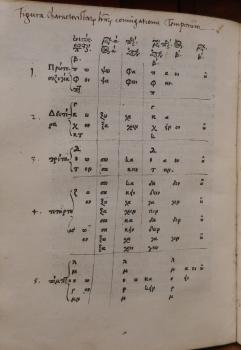
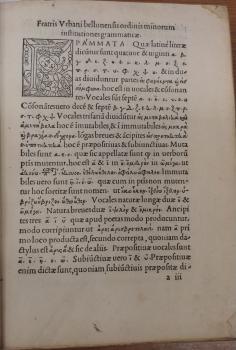

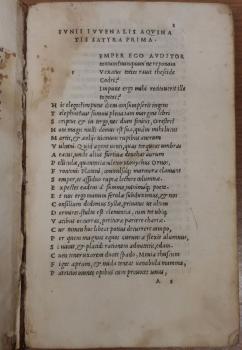
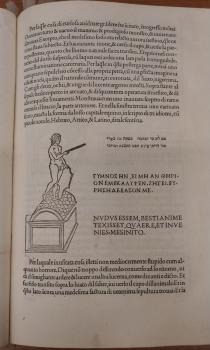
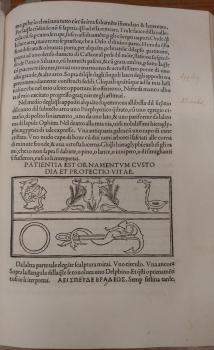
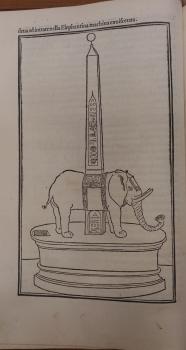
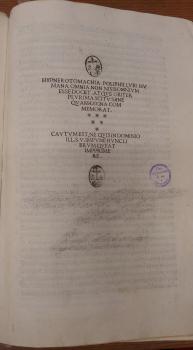

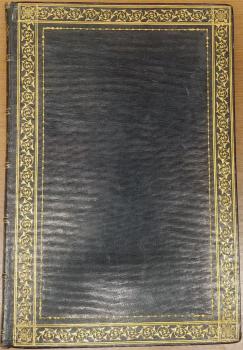
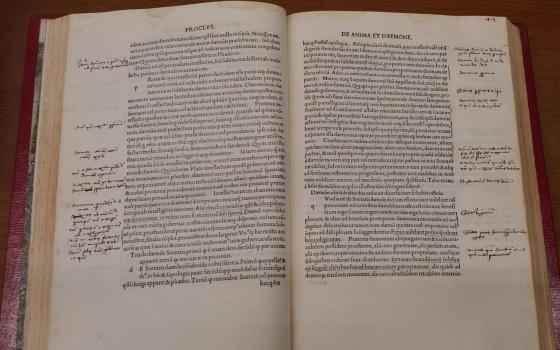
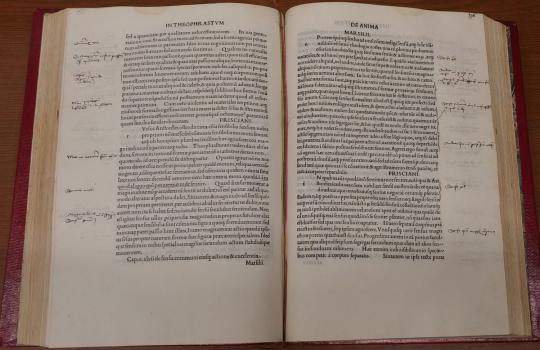
![Psalterium graecum cura Iustini Decadyi. Venetiis, [1497-1498] Psalterium graecum cura Iustini Decadyi. Venetiis, [1497-1498]](/ve/dep/artupload/ve/article/RA6000/MA56549/s_NA61632.jpg)
![Psalterium graecum cura Iustini Decadyi. Venetiis, [1497-1498] Psalterium graecum cura Iustini Decadyi. Venetiis, [1497-1498]](/ve/dep/artupload/ve/article/RA6000/MA56549/s_NA61633.jpg)
![Psalterium graecum cura Iustini Decadyi. Venetiis, [1497-1498] Psalterium graecum cura Iustini Decadyi. Venetiis, [1497-1498]](/ve/dep/artupload/ve/article/RA6000/MA56549/s_NA61634.jpg)

